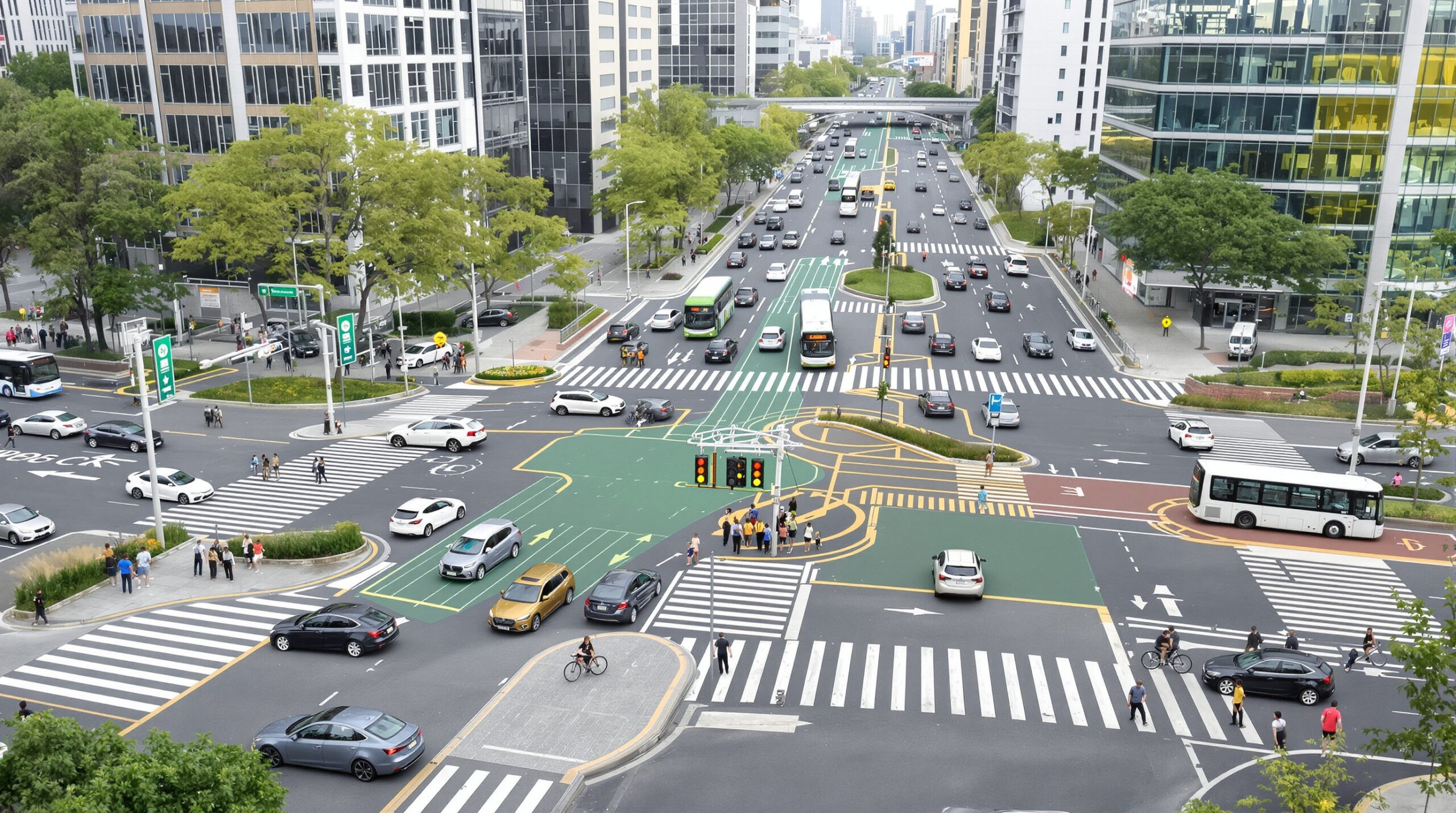Urban areas face growing transportation challenges due to rising populations, more vehicles, and increasing congestion. Inefficient traffic flow leads to longer commute times, wasted fuel, and elevated emissions. To tackle these issues, several cities have begun piloting artificial intelligence (AI)-driven traffic lights. These smart systems promise to optimize traffic management, reduce pollution, and improve road safety.
How AI-Driven Traffic Lights Work
Traditional traffic lights operate on pre-set timers, regardless of real-time road conditions. By comparison, AI-driven traffic lights gather data from sensors, cameras, and connected vehicles. Machine learning algorithms then analyze this data instantly. The system predicts traffic patterns, detects incidents, and adjusts light cycles to clear bottlenecks.
The AI system processes information such as vehicle counts, speed, and pedestrian movement. It weighs traffic loads from multiple directions and balances waits for all users. As a result, it creates a flexible and dynamic system that adapts every few seconds. Dynamic adaptation of traffic signals introduces a new level of efficiency to urban traffic control.
Major Cities Testing the Technology
Numerous cities worldwide have launched pilot projects for AI-based traffic management. Pittsburgh was one early adopter, partnering with Carnegie Mellon University for the Surtrac project. Their system leverages distributed intelligence at each intersection. The lights communicate with each other to coordinate their phases along the corridor.
London has integrated AI with its SCOOT (Split Cycle Offset Optimization Technique) system to monitor and control a significant portion of its road network in real time. In a similar way, the city of Hangzhou, China, uses AI and big data to power its City Brain platform. The City Brain controls thousands of intersections, reducing travel times for emergency vehicles and regular commuters alike.
Other cities piloting this technology include Toronto, New Delhi, and Singapore. These cities face distinct traffic challenges, making them ideal testbeds for scalable and adaptable AI traffic management solutions. As cities compare results, best practices are rapidly evolving and spreading from one pilot to another.
Cutting Congestion with Real-Time Optimization
AI enables constant, automatic adjustment of traffic lights based on real-world conditions. During rush hours, light cycles are tuned to match heavier flows and reduce waiting time. When an intersection becomes unexpectedly congested, the system rapidly shifts timings to move more vehicles through.
Some pilot studies suggest traffic delays fell by as much as 25 percent where smart signals were deployed. With uniform control, entire traffic corridors become smoother, and queue spillbacks decrease. By preventing gridlock at key points, overall travel times drop, and driver frustration decreases.
Real-time optimization also helps accommodate special circumstances. Whether it is road construction, a parade, or emergency vehicles, the system instantly adjusts to allow the safest and quickest flow. This responsiveness overcomes the rigid limitations of legacy signal schedules and benefits everyone who uses the road.
Reducing Emissions and Environmental Impact
Idling engines release substantial amounts of carbon dioxide and other pollutants. Congested roads also increase the frequency of starts and stops, burning fuel inefficiently. AI-driven lights aim to keep vehicles moving smoothly and prevent long stops at red lights where possible.
By shortening delay times, optimized signals can lower total fuel use across an entire network. Pittsburgh’s trials reported up to a 21 percent emissions reduction at test intersections. Decreasing emissions not only improves local air quality but also supports long-term climate goals by reducing urban carbon footprints.
This technology complements additional sustainable transport efforts, like promoting cycling, walking, and public transit. Smart traffic management can prioritize buses, trams, or emergency vehicles when needed. Such measures bolster citywide environmental initiatives by cutting combined vehicle emissions.
Challenges and Limitations of Implementation
Transitioning to AI-driven traffic lights involves technical, financial, and organizational hurdles. Upgrading intersections with sensors, cameras, and connected hardware requires major investment, especially in older cities. Integrating systems with the current infrastructure can pose compatibility issues and require extensive calibration efforts.
Another challenge lies in public trust and privacy concerns. Using real-time video and data collection must comply with data protection laws and ethical standards. Cities must ensure transparency and address potential fears surrounding surveillance and data misuse.
Beyond technical hurdles, coordination is required across government agencies, emergency responders, and public transport. Effective deployment relies on cross-sector partnerships and broad community engagement. Education campaigns can help explain benefits, answer questions, and encourage cooperative use of the new technology.
Looking Toward Future Mobility Solutions
AI-based adaptive traffic signals represent a key step in the transformation of urban transportation. As cities digitize and share mobility data, the potential for integrated, highly responsive mobility systems continues to expand. Future integrations with connected vehicles, ride-sharing services, and real-time navigation apps can yield even greater efficiencies.
Cities are also studying the social equity impacts of smart traffic management. Algorithms need regular oversight to prevent bias and ensure fair outcomes across neighborhoods. If deployed thoughtfully, technology can bring safer intersections, quicker emergency response, and reduced travel burdens for all residents.
Continued research, pilot projects, and public feedback will shape the next generation of AI-driven traffic lights. Improvements in sensor accuracy, machine learning, and cloud connectivity could create increasingly robust and flexible systems. By learning from today’s trials, cities can develop more livable, sustainable roads for future generations.
Conclusion
AI-driven traffic light pilots demonstrate significant potential to transform how cities manage daily congestion and emissions. Through data-driven adaptation, these systems move traffic more efficiently while lowering air pollution. Early results from multiple cities highlight the effectiveness of real-time traffic optimization in busy urban settings.
Challenges remain regarding implementation, privacy, and public acceptance. Addressing these will require continued collaboration among technologists, city planners, and residents. As initiatives scale and technology matures, smart traffic management can help create safer, cleaner, and more reliable urban transportation networks for everyone.

